FIRE Trek: Parallels Between the Financial Independence Movement and Star Trek
“Financial freedom, the final frontier. These are the voyages of the Starship Independence. Its continuing mission: to explore strange four percent rules, to seek out new life hacks and new optimizations, to boldly go where no traditional retiree has gone before…”
“FIRE TREK” — featuring the adventures of the Federation Starship U.S.S. Independence — is the show fans might get in a mirror universe where CBS decided to produce a Star Trek series for CNBC.
If you think Counsellor Troi should evaluate whether I’ve lost my marbles for having such thoughts, I wouldn’t blame you.
Happily, I am not crazy, but why would I have this brainstorm?
As a member of both the Star Trek fan community and the FIRE movement, I think a lot about, and consume a ton of content from, both universes. So, perhaps inevitably, these two interests eventually collided in my brain, and one day while thinking about why FIRE principles resonate so much with me, one answer became startlingly clear:
The principles of the FIRE movement have uncanny parallels with the core values of Star Trek!
For the uninitiated, FIRE stands for “Financial Independence, Retire Early.” The main idea of the movement is to amass enough investments and/or passive income to achieve financial freedom and become “work optional.”
For the past year, the FIRE movement increasingly has been in the media spotlight, especially in the financial press but also in the mainstream news. Maybe you have seen sensational stories about Millennials leaving the corporate world in their 20s or 30s to “retire” early to pursue their passions or travel the world. Or maybe you have seen stories about extreme frugalists who try to save 50% or more of their income in order to achieve financial freedom sooner.
Many in the FIRE community believe that the movement will move even further into the mainstream with the release of the new film, Playing with FIRE: The Documentary. The movie chronicles one family’s story “as they embark on a year-long odyssey to understand the rules of this sub-culture and test their willingness to reject the standard narrative of adult life.” The documentary also features interviews with several prominent social influencers in the FIRE movement.
The film’s producers are planning a series of special screenings in June in San Diego, San Francisco, Seattle, London, Washington D.C., Albany, Detroit, New York City, and Atlanta — with a wider distribution hopefully to follow.
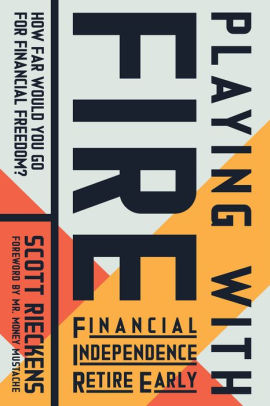
If I’ve piqued your curiosity and you’d like a deeper introduction to FIRE, Investopedia has a good primer:
Before diving into the weeds with my observations about how I see Star Trek principles reflected in the FIRE movement, I thought I’d provide a bit of background context about myself.
My FIRE Background
My wife and I had a dream of retiring early from nearly the beginning of our marriage of 16 years. Initially, that goal seemed pretty far off. A few years ago, our plan for early retirement became a more ambitious goal (with an accelerated timeline) that we were actively working toward and closely tracking. Shortly thereafter, I became aware of the FIRE movement and the multitude of blogs and podcasts about the topic. I dug deeper into FIRE principles and started following numerous bloggers and podcasters regularly.
The FIRE movement’s tenets and life philosophy immediately clicked with me and gave voice to my innate thoughts about how life “should be” in a (more) perfect world. In 2018, we made pretty dramatic life changes (including “geoarbitrage”) to reach the “finish line” — and we “FIREd” in June of that year.
My Star Trek History
Star Trek has been a lifelong passion for me and a meaningful influence on my life in multiple ways.
I have watched all of the TV series in their entirety (except for “Enterprise” which I abandoned after season one, never to return). I’ve seen every Star Trek movie in the theater during its initial release (including the world premiere of Insurrection in Las Vegas). I have also watched many of the major fan films (e.g. Star Trek Continues and Star Trek Phase II) and have even made one of my own. In my college radio days, I had the honor of interviewing Leonard Nimoy (not in person, sadly, but by phone).
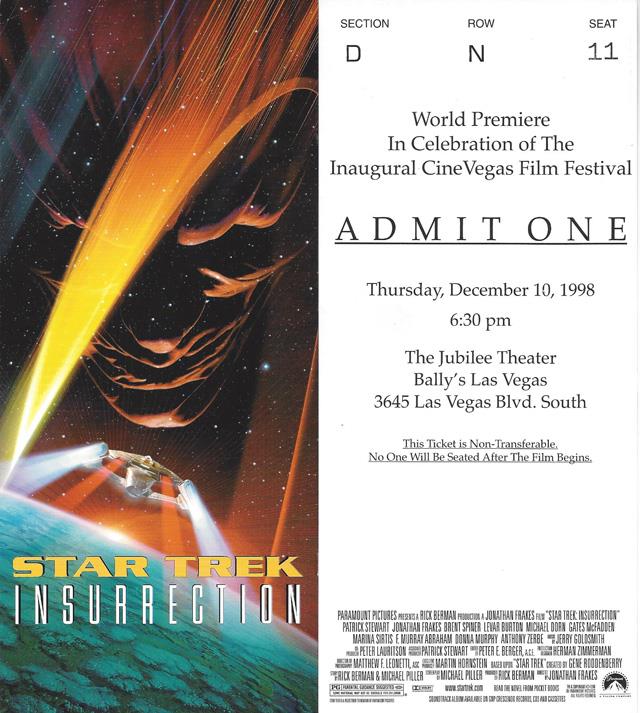
I provided a few more details about how my fandom started in childhood and continued into adulthood (and fatherhood) in my post, How I Introduced My Kids to Star Trek.
Star Trek has always been near and dear to my heart as an inspirational and aspirational vision of humankind’s future. The mythology provides a core set of moral values to learn from and live by. I’ve always said that Star Trek is the closest thing I have to a religion.
So, now that I’ve set the stage, I can turn back to the question: how does Star Trek relate to the FIRE movement?
Economy, Money & Work
Star Trek
Official Star Trek canon never deeply explains the details of the economic system in the United Federation of Planets, although we do have a few clues. For example, the role of money and wealth is pretty clear in Star Trek creator Gene Roddenberry’s vision of the future.
Below is what we know (quotes courtesy of the Star Trek WIKI, Memory Alpha):
In the movie Star Trek IV: The Voyage Home, Captain Kirk, Spock, and crew travel back in time to 1986-era San Francisco. During their adventure, Kirk tells Spock about 20th century Earth, saying, “They’re still using money. We need to get some.” Later in the movie, when Kirk can’t pay for dinner at a restaurant with the movie’s love interest, she asks sarcastically, “Don’t tell me they don’t use money in the 23rd century,” to which Kirk earnestly replies, “Well, we don’t.”

So, the first thing we know is that money seems to be a relic of the past for the Federation (but not for all denizens of Star Trek as we’ll find out later in the post).
In the movie, Star Trek: First Contact, another time travel adventure to earth’s past, someone asks Captain Picard how much his starship cost to build. Picard explains:
The economics of the future is somewhat different. You see, money doesn’t exist in the 24th century… The acquisition of wealth is no longer the driving force in our lives. We work to better ourselves and the rest of Humanity.
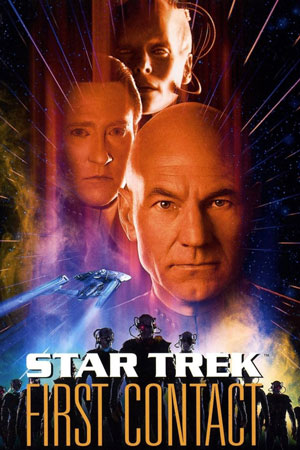
So, the second thing we know is that money is no longer required for core survival needs. As a result, people work not because they have to but because they want to in order to fulfill other needs of the human spirit.
In the Deep Space Nine episode In the Cards, Jake (a human) and his friend Nog (who’s Ferengi, a species consumed by greed) have the exchange below:
Jake: “I’m Human, I don’t have any money.”
Nog: “It’s not my fault that your species decided to abandon currency-based economics in favor of some philosophy of self-enhancement.”
Jake: “Hey, watch it. There’s nothing wrong with our philosophy. We work to better ourselves and the rest of Humanity.”
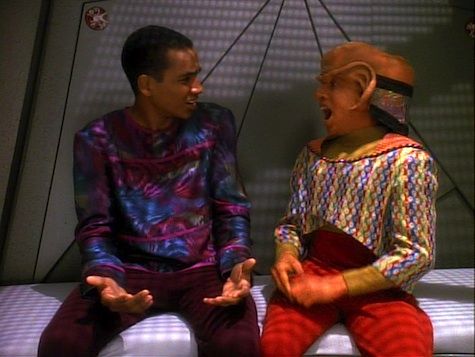
So, the third thing we know is that humankind’s focus has changed from a pursuit of wealth and status to a pursuit of knowledge, enlightenment, and self-improvement. (On a lighter note, we can observe that Ronald D. Moore, who co-wrote both First Contact and In the Cards, must really like the quote, “We work to better ourselves and the rest of Humanity” — since he gave the exact same line of dialog to both Jake and Picard…)
In 2016, Manu Saadia, a French writer with a background in history and economics (and the author of the book “Trekonomics”), commented about Star Trek characters in an interview with Wired Magazine. His analysis reinforces the notion that in Roddenberry’s vision of the future, liberation from financial worries allows people to work for more noble purposes.
They are consistent with the economic circumstances in which they live. Imagine yourself growing up in a society where there is never any want or need or financial insecurity of any sort. You will be a very different person. You will be absolutely uninterested in conspicuous consumption… You will probably be interested in things of a higher nature—the cultivation of the mind, education, love, art, and discovery.
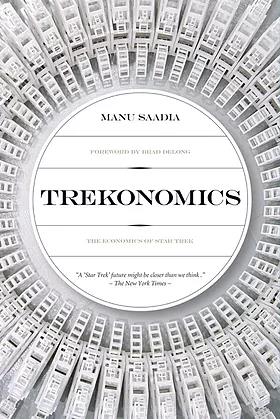
FIRE Movement
If you are a member of the FIRE community, I hope the quotes above have you saying to yourself, “That rings a bell!” They sound remarkably similar to sentiments expressed by adherents of the FIRE lifestyle.
For me, the most important tenet of the FIRE movement is achieving liberation from mandatory employment to free up time for self-discovery, self-realization, and self-improvement (and for many, also the betterment of others).
Most advocates of FIRE do NOT define retirement as sitting on a beach all day or playing endless rounds of golf (unless that happen to be their life’s passion). More typically, the FIRE community pursues a wide variety of interests without worrying too much about earning income from them.
Tanja Hester (creator of the award-winning blog Our Next Life, and author of the book “Work Optional”) told Lifehacker:
Financial independence ultimately means that you can shape your life without taking money into consideration. Most of us have to consider our finances in nearly every decision we make, or maybe even make decisions solely based on money. But once we reach financial independence, we get the freedom not to be bossed around by what we earn or what we have saved.

In his comprehensive introduction to the FIRE movement at Camp FIRE Finance, Ty Roberts writes:
FIRE is so much more than budgeting, investments, or a math equation. FIRE is a way of life and a growing movement that is spreading across the globe and being embraced; not because people suddenly love budgeting and personal finance but because FIRE provides hope. For anyone that’s ever felt trapped by the thought of a working career that could last into their late 60’s or early 70’s, FIRE provides a feasible alternative to the traditional path that society peddles… At its core, FIRE is reclamation of one’s personal freedom.
Mr. Money Mustache (Peter Adeney), one of the biggest influencers of the FIRE movement, clarified his definition of Financial Independence on his blog in response to the controversy which erupted after Suzy Orman declared she hated the FIRE movement on Paula Pant’s Afford Anything podcast.
Everybody uses the FIRE acronym because it is catchy and “Early Retirement” sounds desirable. But for most people who get there, Financial Independence does not mean the end of your working career. Instead it means, “Complete freedom to be the best, most powerful, energetic, happiest and most generous version of You that you can possibly be.”
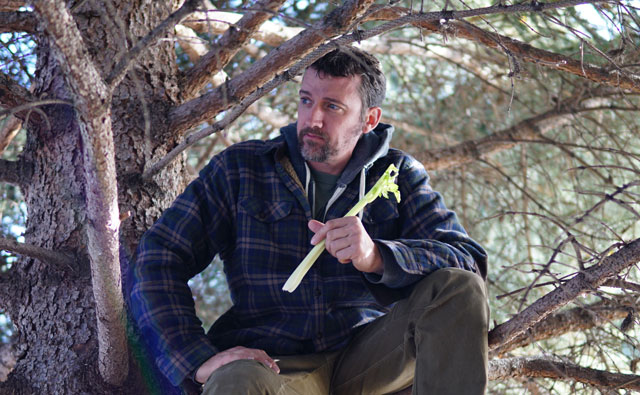
The FIRE community’s aspirations for life after FI sound to me remarkably similar to Roddenberry’s imagination of life after money in Star Trek.
Consumerism
Star Trek
In the future of Star Trek, consumerism is obsolete.
In the TNG episode The Neutral Zone, Captain Jean-Luc Picard explains to another character that “A lot has changed in three hundred years. People are no longer obsessed with the accumulation of ‘things.’ We have eliminated hunger, want, the need for possessions.”
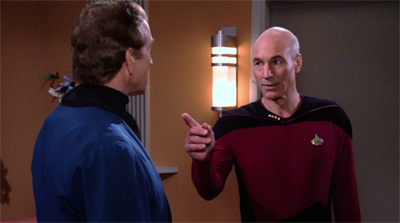
Despite the abandonment of money in the Federation economy, money DOES still exist in the future in Star Trek. The citizens of the Federation and crew members on Starfleet ships may not covet wealth, but many characters outside of the Federation certainly do.
Not surprisingly, Star Trek nearly always portrays characters who are greedy or pursue wealth as villainous or comical (or both).
In TOS, TAS, and DISCO, the character of Harry Mudd is a smuggler and swindler whose avarice causes trouble for Starfleet crews. Notably, as a moral consequence of his greed, Mudd’s money-making schemes always blow up on him and leave him in a worse state. At least until Discovery, Star Trek portrayed his character more in a comic light than in a menacing one.

By far, the best example of Star Trek’s view on greed and consumption is represented by the Ferengi, an alien species TNG introduced and DS9 featured extensively.
“They’re greedy, misogynistic, untrustworthy little trolls, and I wouldn’t turn my back on one of them for a second.”
– Kira Nerys from the Deep Space Nine episode “Rules of Acquisition”
According to the Memory Alpha knowledge-base:
Ferengi civilization was built on a caricature of free enterprise, where earning profit was the sole meaningful goal in life, superseding all other endeavors… The Ferengi culture was centralized around the concept of greed and profit earning. Ferengi society most notably was based on a list of rules for business ventures with other Ferengi known as “The Rules of Acquisition.” … Greed, deceit, distrust, and opportunism were highly prized values among Ferengi and all were represented within the Rules.
TNG mostly portrayed the Ferengi as buffoons, and they were not really credible adversaries. DS9 brought more nuance to the Ferengi mythology and made the species more intriguing and compelling. However, in both shows, their main purpose was to provide contrast to the principles of the Federation. And by the end of DS9, the Ferengi culture had started adopting some Federation values.
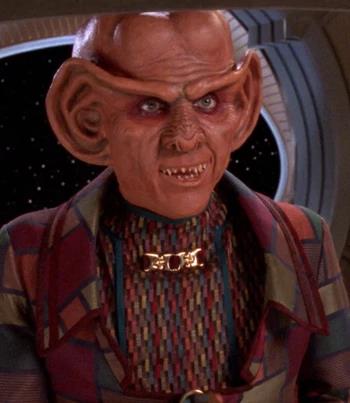
FIRE Movement
The main parallel I see in the FIRE community (and especially in “Lean FIRE”) is the widely shared value of anti-consumerism. Money in the FIRE movement is a means to an end but definitely not an end itself. The movement focuses on intentional spending, breaking away from mindless consumption and bucking the social norm of keeping up with the Joneses.
Vicki Robin, the author of the seminal book, Your Money or Your Life and a progenitor of the FIRE movement, writes on her website:
I still believe that millions of people unhooked from the toxic messages of consumerism and dedicated to making happy, productive financially independent lives is … a model for society: financial security – however it comes – yields amazing returns in health, happiness, longevity, connections, meaning, purpose and civic engagement. It’s an innovation that keeps on giving!
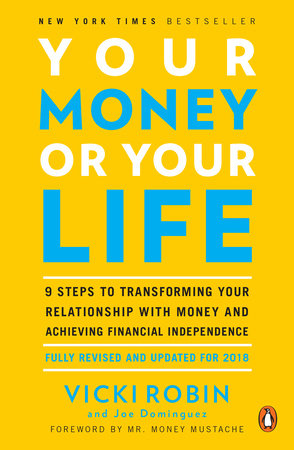
In her MarketWatch column, early retiree, blogger, podcaster, and author, Tanja Hester, writes:
Virtually everyone pursuing FIRE lives what looks like a pretty normal middle-class lifestyle. We spend on things we value, like travel and time with loved ones, and we eat normal food… Where we differ is that we get strategic about cutting out spending that doesn’t add value to our lives, and we’re ruthless about avoiding mindless spending and lifestyle inflation.
In The 10 Pillars Of FI at ChooseFI, Jonathan Mendonsa articulates his take on a core tenet of FI:
Instead of focusing on buying stuff to make up for my unhappiness, what if I just focused on happiness? What if I made a list of things that actually made me happy? … What we find out over and over again is that the list rarely includes stuff. Stuff is not a necessary prerequisite for happiness.

Finally, Grant Sabatier, founder of Millennial Money, was a panelist on a round table discussion about the documentary Playing with Fire at last year’s FinCon. In his write-up, he concluded:
The last topic of the conversation was the potential and power that FIRE has to change society and allow people to live richer, freer, and fuller lives… We all agreed that the FI movement is a response to an increasingly-fragmented, technology-addicted, consumerist society.
In Star Trek, villains amass wealth to accumulate possessions and status. In the FIRE movement, everyday heroes build wealth to buy freedom.
Diversity & Inclusion
Star Trek
Arguably, diversity and inclusion are the bedrock on which Star Trek is built, as evidenced by its thematic story elements and by the casting of the various series.
One well-known meme from Star Trek is the Vulcan philosophy of Infinite Diversity in Infinite Combinations (IDIC).
According to Fanlore:
Gene Roddenberry originated the IDIC philosophy as a Vulcan belief: “Infinite Diversity in Infinite Combinations represents a Vulcan belief that beauty, growth, progress — all result from the union of the unlike.”
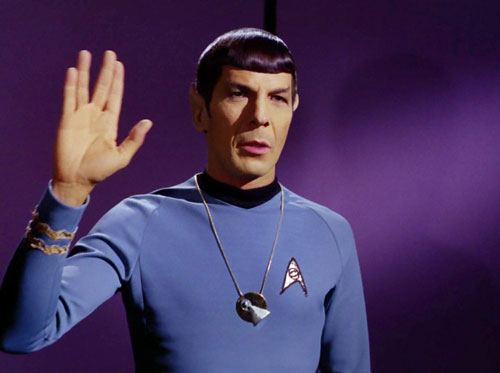
Starships on Star Trek are served by crews comprised of both males and females, species and races from different planets across the Federation, and even non-biological life forms like androids and holograms. Shared values unite these diverse crews, and they work harmoniously together toward common goals. Racism and intolerance are not part of the culture in Starfleet (though we certainly see those evils in civilizations outside of the Federation).
Looking at the casting for each series, we see that Star Trek has generally been a pioneer at pushing the TV industry forward toward increasing diversity and inclusion (especially when you consider the time period and social era during which each series aired).
- Star Trek (The Original Series) aired from 1966 to 1969, and the bridge crew of the Starship Enterprise included characters played by a black actress, a Japanese American actor and a Russian American actor (playing a full Russian) — which was notable since America was still in a Cold War with Russia. Star Trek is famous for including the first interracial kiss on television.
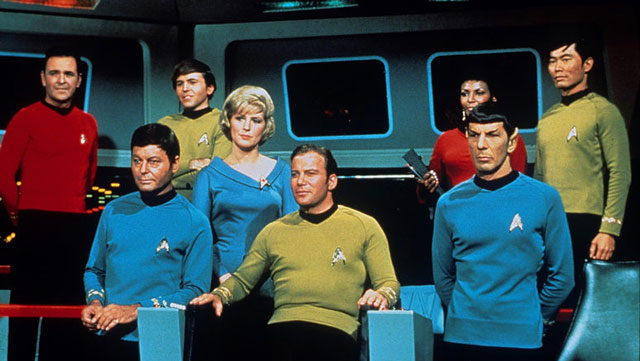
- Star Trek: The Next Generation (1987 to 1994) featured black actors as the Chief Engineer and Chief Security Officer, as well as Whoopi Goldberg in a key recurring supporting role. The show also featured women in prominent roles (such as Chief Medical Officer), but — to be fair — TNG is not well-regarded for its handling of the female characters (who got less spotlight and character development than their male counterparts).
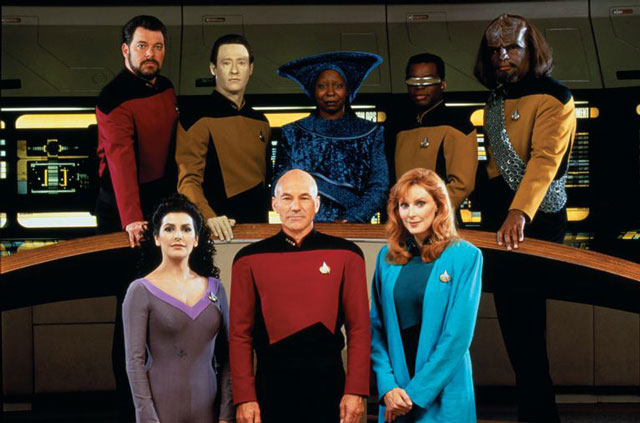
- Star Trek: Deep Space Nine aired from 1993 to 1999 and once again Star Trek showed remarkable diversity for its time. A black actor played the Commander of the space station, the lead part in the show. His son and girlfriend (also played by African Americans) were prominent supporting characters. A Sudanese actor played the Chief Medical Officer. And for the first time in Star Trek, the main female characters (e.g. the First Officer and Chief Science Officer) were forces to be reckoned with and got significant screen time.
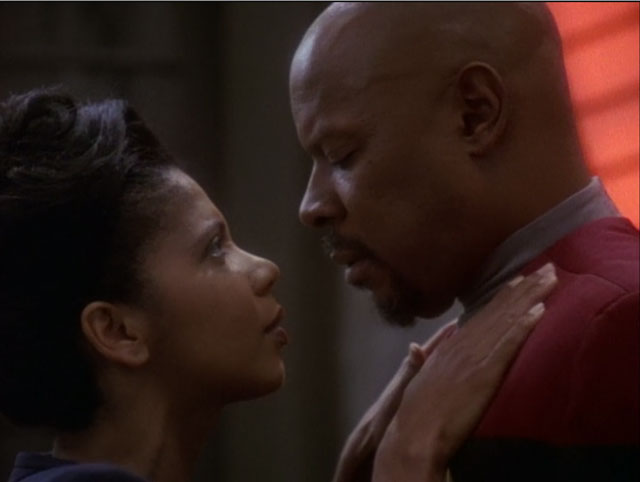
- Star Trek Voyager (1995-2001) featured the most prominent and powerful roles for women on Star Trek to that point in its history. The Starship Voyager had a female Captain (the show’s lead), a female Chief Engineer, and a brilliant female Scientist. Also on the diversity front, a black actor played the Vulcan Chief Security Officer, a Hispanic actor played the Native American First Officer, and a Chinese American actor played an Ensign on the bridge crew.

- Star Trek: Discovery (2017-) stars a black actress in the lead role, a British Pakistani actor as her love interest, and a Malaysian superstar (Michelle Yeoh) in a key recurring role. Perhaps most notably, one of the main subplots of the show revolves around Star Trek’s first openly gay characters, a married couple who share quarters and (in season one) had the franchise’s first on-screen gay male kiss.
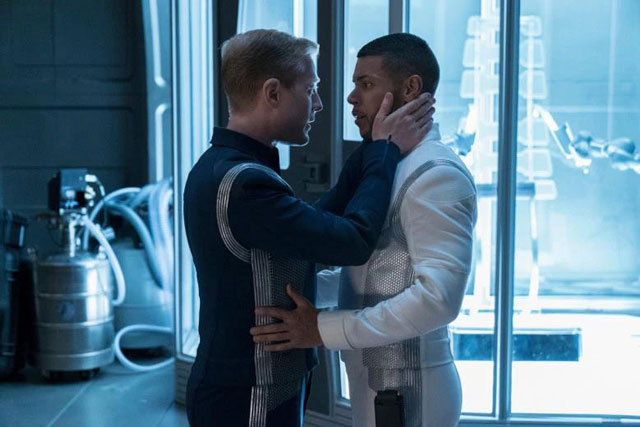
Star Trek certainly does not have a perfect track record when it comes to inclusion (especially earlier in its history with the female characters), but strength through diversity is definitely one of its core values.
FIRE Movement
One stereotype about FIRE is that white males (many of whom were previously in the tech industry) dominate the movement. (Full disclosure: I am yet another from that camp.) However, the reality is that the FIRE movement is incredibly inclusive and values diversity.
To overcome the misconception that personal finance bloggers are primarily white males, Angela at Tread Lightly, Retire Early has compiled an extensive list of female bloggers and podcasters in the personal finance space. As of May 2019, the running list contained about 170 entries with around 75 them in the FIRE space.
On Our Next Life, Tanja Hester (author of the book Work Optional) writes:
There are FIRE bloggers and aspirants whose work had nothing to do with tech, engineering or math (hi!), along with lots of folks in corporate America, publishing, realty, social work, education, academia, nonprofits, health care, finance, government, the military, applied science, consulting and insurance — and that’s just the people I know personally.
Which is to say: everyone is welcome here. Whether you love spreadsheets or not. Whether you enjoy math or not. Whether you love craft beer or not. Whether you’re male, female or nonbinary. Whether you’re financially coupled or financially single. Whether you make a bunch of money or not.
What matters is not your profession or what you majored in in college, but that you’re game to think about your money differently and work hard to achieve a big goal. That’s the only prerequisite.
One of the tenets of the FIRE movement is that anyone can adopt its best practices, as long as they can achieve an appreciable gap between their income and their expenses — and then be disciplined about saving and/or investing the difference. (Paula Pant has a good introduction to this idea at Afford Anything.)
Popular FIRE podcasts, such as ChooseFI and What’s Up Next, make a point of featuring a wide variety of guests from across the spectrum of gender, race, and socioeconomic status. In the case of What’s Up Next (in which Paul Thompson and Doc Green host roundtable discussions with a rotating panel of guests):
- Episode 23 (“The Immigrant Advantage?”) explored “whether being an immigrant influences one’s path to financial independence.”
- Episode 24 (“The Black Financial Independence Community”) discussed “whether financial independence is different for the African American community.”
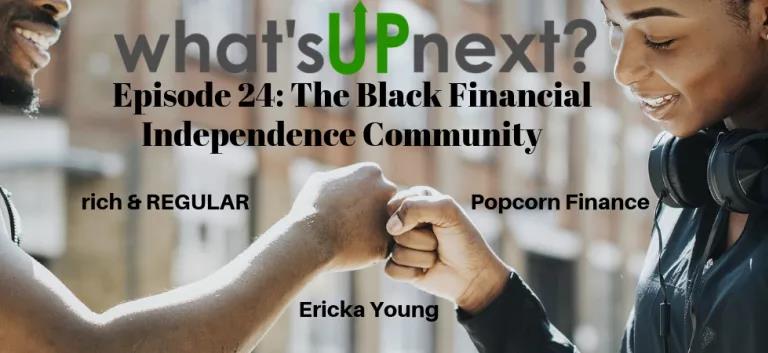
The FIRE movement is for everyday people from all walks of life. The community is anything but elitist and tries to demystify money management techniques and investment strategy so that anyone can understand and apply the principles.
Collaboration, Cooperation & Debate
Star Trek
Star Trek crews solve problems, make new discoveries, and sometimes even save worlds via exemplary collaboration and cooperation. The characters are mostly self-less and share ideas liberally. Even a precocious civilian teenager, who has not yet attended Starfleet Academy, can routinely solve a conundrum or save the day (and often did to the annoyance of some TNG fans). Ideas can come from anywhere, and the ones best suited to the problem at hand win out, free from political influence or selfish motives.

FIRE Movement
The FIRE community is not competitive. Members of the movement share knowledge, support each other and celebrate successes together. FIRE podcasters frequently appear on each other’s shows and promote each other, which further builds the spirit of community.
Bloggers amass and publish huge knowledge bases to introduce newbies to FIRE principles and practices. Community members gather to ask questions and discuss ideas in forums and in-person meetups.
One notable difference between Star Trek and the FIRE movement is that Gene Roddenberry had an edict forbidding interpersonal conflict among Federation crew members. By contrast, I think most members of the FIRE community would agree that we should embrace healthy debate, listen to dissenting views, and learn from conflict.
Community Subculture
Star Trek
When I was growing up, and watching The Original Series and its spin-off movies, Star Trek was one of just a few pop culture franchises in the science fiction/fantasy genre. In addition to Star Trek, you had Star Wars, Planet of the Apes, James Bond, Indiana Jones, and a few others.
Flash forward to today and Star Trek is arguably lost in the crowd — and just one of a multitude of sci-fi/fantasy franchises and extended universes. Star Trek competes for attention with all of the movie series I mentioned above plus the Marvel Cinematic/TV universe, the DC universe, Harry Potter, The Hobbit/Lord of the Rings, Game of Thrones, The Terminator, Alien, Battlestar Galactica, and The Expanse to name just a few.
In my mind, Star Trek still stands out and is special compared to the others. However, the sad reality is that most of my kids’ middle school cohorts have barely even heard of Star Trek.
You have to be a motivated fan to seek out Star Trek, unlike the glory days when TNG was one of the top-rated shows in first-run syndication and a pop culture phenomenon. (Over 30 million viewers watched the series finale in 1994 according to Wikipedia.)
That said, Trekkers and Trekkies are rabid fans, and they gather together to share their love of Star Trek in forums, at fan club meetups, and at conventions.

FIRE Movement
Just as Star Trek is currently a niche subculture in today’s ever-expanding universe of pop culture franchises, the FIRE movement could be considered a niche subculture within the larger universe of personal finance.
Until last fall’s Suze Orman controversy, which erupted after her appearance on the Afford Anything podcast, I think most Americans never had heard of the FIRE movement. FIRE was outside of the mainstream, and you had to seek out the community.
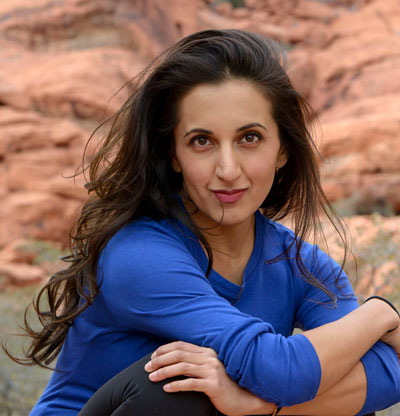
As with Star Trek fans, however, the members of the FIRE community are passionate advocates — and like Trekkies and Trekkers, they gather together in forums, at in-person meetups (such as CampFI and ChooseFI local groups) and at conventions (e.g. FinCon, an annual conference for personal finance bloggers and podcasters).

My hope is that Star Trek will one day warp back into the mainstream, but the reality is that I am more optimistic that Financial Independence principles and practices will emerge from the shadows and take fire among the masses.

Live Long & Prosper
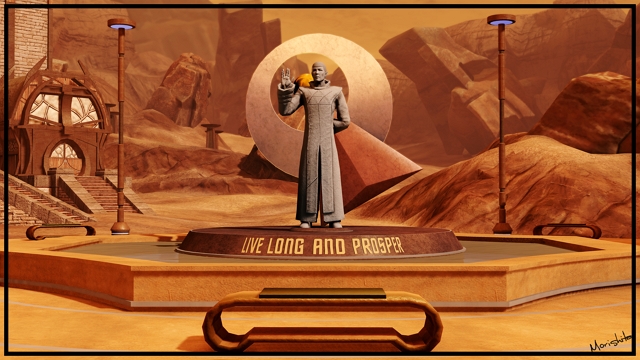
The Vulcan greeting for farewell is “Live long and prosper.”
Merriam-Webster defines prosperous as:
Marked by success or economic well-being; enjoying vigorous and healthy growth : FLOURISHING
For FIRE adherents, the sooner they can reach FI, the more time they will have to flourish — i.e to “live long and prosper.”
I can’t think of a more fitting sentiment to sum up the shared philosophies of Star Trek and the FIRE movement.
Update – May 15, 2019
In celebration of the release of the Playing with FIRE documentary, I substantially updated and improved this post, as compared to the version I originally published in October of 2018.
Update – June 5, 2019
Star Trek news site Treksphere republished a condensed version of this post. (Note: the site is now defunct.)
Image Credit
I created my FIRE TREK poster art featuring the fictitious U.S.S. Independence from the original U.S.S. Komachi artwork by Kurumi Morishita. Special thanks to Kurumi for permission to use her art in this post.
Your Turn
Do you agree with my comparisons between Star Trek and the FIRE Movement? Please let me know in the comments.
(Note: I moderate all comments so you may experience a delay before your comment appears on the post. For any SPAMMERS out there, don’t waste your time submitting as I will reject your comment.)


Captain Picard is my favorite Star Trek character. He exudes confidence and competence. That’s my kind of captain. Kirk is too volatile.
Nice job drawing the parallels between Star Trek and FIRE. It sounds like they went whole hog socialism with a bit of Bhutan happiness index thrown in. That’d be a pretty ideal society to live in. The FIRE movement has grown quite a bit over the last few years. It’s pretty amazing.
Keep at it!
Thanks for the comment, Joe. I agree that Picard was the best captain of all of the series, although Kirk’s swashbuckling was pretty entertaining. For anyone who missed the news, Patrick Stewart will be reprising the role of Jean Luc Picard on a new Star Trek TV series coming in a year or so on CBS All Access.